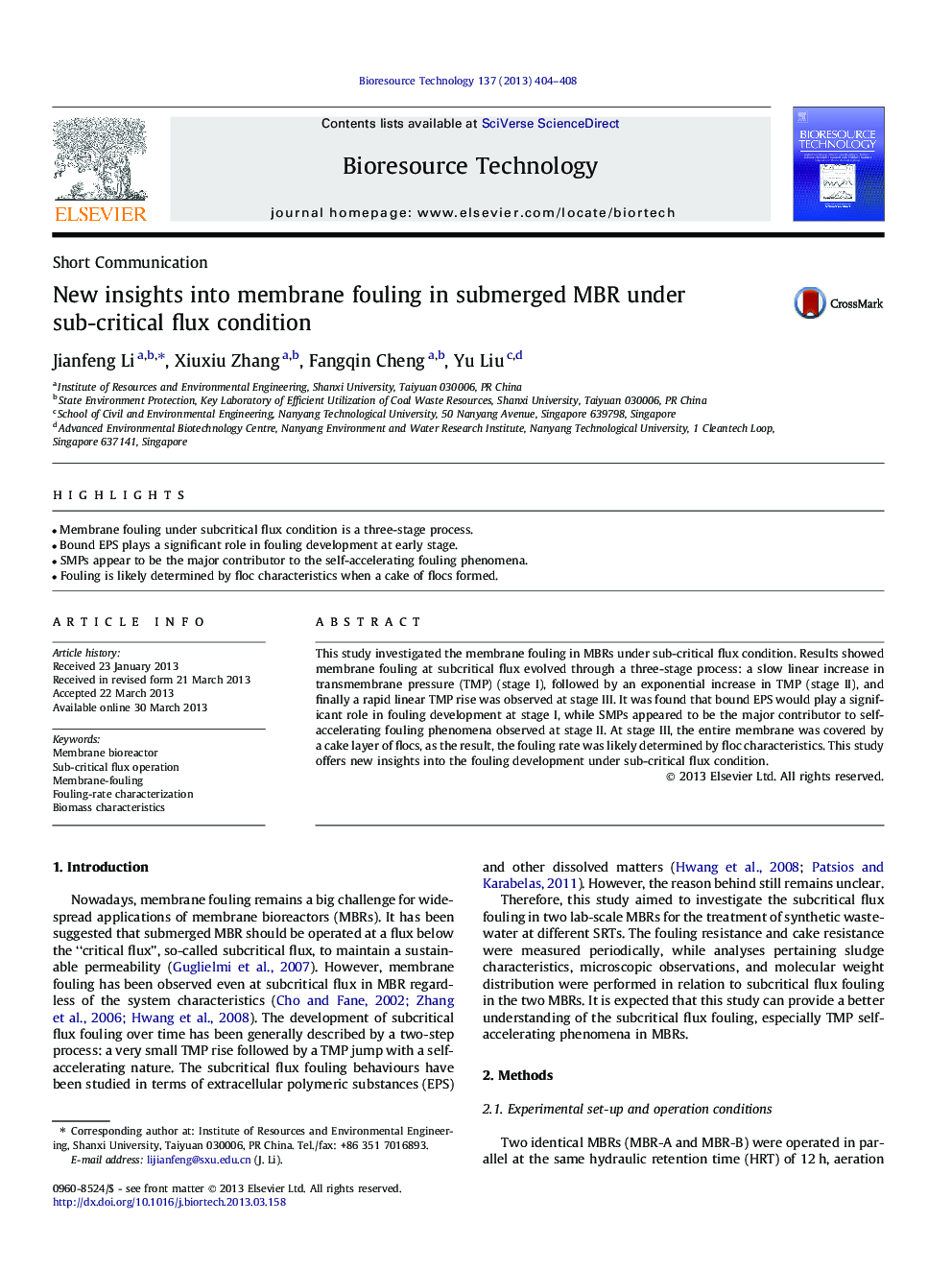| Article ID | Journal | Published Year | Pages | File Type |
|---|---|---|---|---|
| 681168 | Bioresource Technology | 2013 | 5 Pages |
•Membrane fouling under subcritical flux condition is a three-stage process.•Bound EPS plays a significant role in fouling development at early stage.•SMPs appear to be the major contributor to the self-accelerating fouling phenomena.•Fouling is likely determined by floc characteristics when a cake of flocs formed.
This study investigated the membrane fouling in MBRs under sub-critical flux condition. Results showed membrane fouling at subcritical flux evolved through a three-stage process: a slow linear increase in transmembrane pressure (TMP) (stage I), followed by an exponential increase in TMP (stage II), and finally a rapid linear TMP rise was observed at stage III. It was found that bound EPS would play a significant role in fouling development at stage I, while SMPs appeared to be the major contributor to self-accelerating fouling phenomena observed at stage II. At stage III, the entire membrane was covered by a cake layer of flocs, as the result, the fouling rate was likely determined by floc characteristics. This study offers new insights into the fouling development under sub-critical flux condition.
